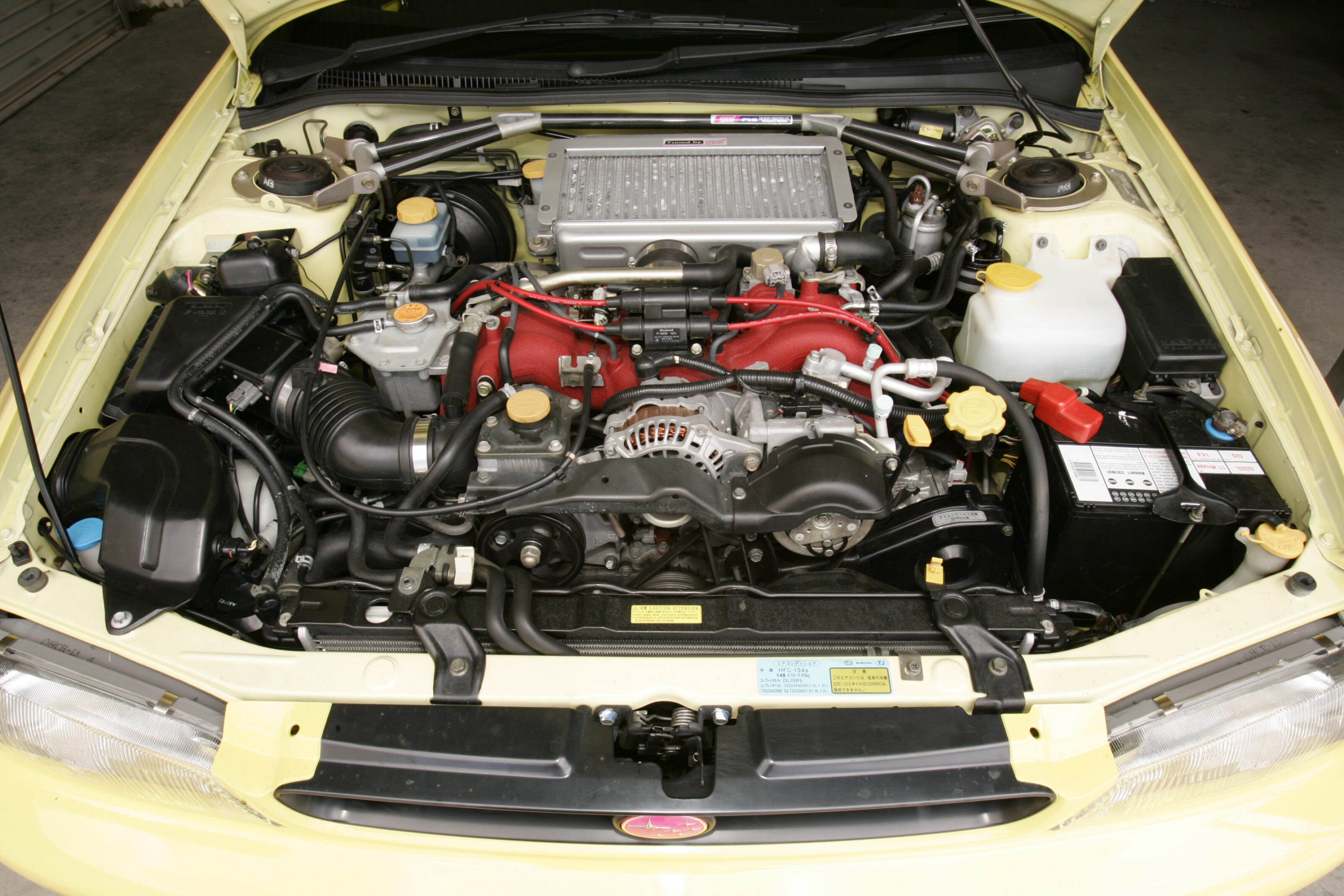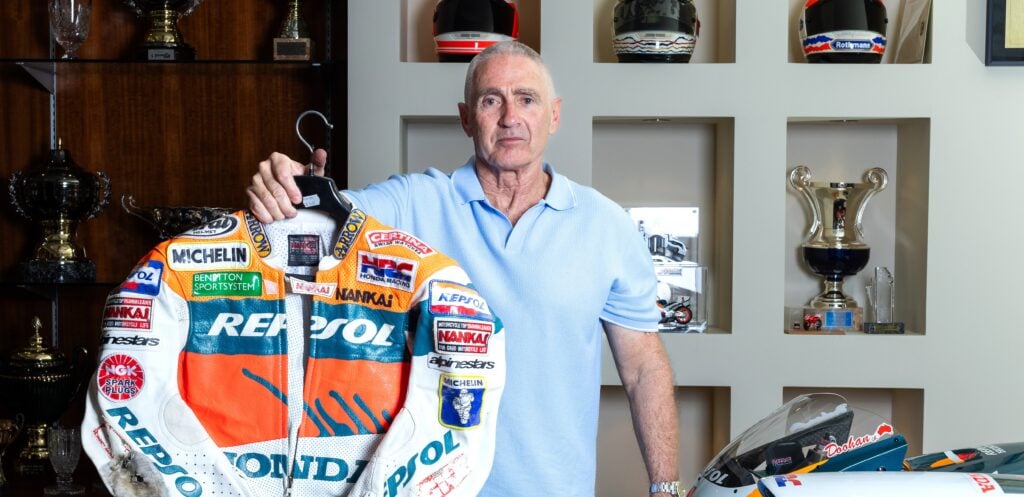Mention Subaru’s Impreza WRX and it’ll invoke a variety of responses: world rally, ram-raids, boy-racers and PlayStation are just a few of the myriad influences that have helped make the WRX part of pop culture. Impressive, given that since its launch in 1994, just 22,000 WRXs have been sold in Australia.
This feature was first published in MOTOR Magazine’s March 2006 issue
Four body changes over 12 years and the introduction of the STi to the first market outside Japan have all helped give the WRX its high profile in Australia. But it takes more than just a good car to make an impression.

Subaru’s Nick Senior is a strong advocate of the model and motorsport, helping the WRX establish credentials. “I grew up in the ’60s,” recalls Senior, “when lots of performance cars were developed: GT and Phase Falcons, XU-1s and Monaros. I felt it was a shame there wasn’t a collection of these cars.”
So Senior started collecting the significant WRX models for an active museum consisting of significant STi models, and a few important WRXs. It all started in 1992 with the Liberty RS Turbo, but the phenomenon really took off at the 1997 Rally of Canberra. So Subaru landed its museum and its ARC/Subaru racers Dean Herridge and Bill Hayes at Wakefield Park and threw us the keys for a few laps.
MY98 WRX STi Type R
“The catalyst for it all was the yellow terror, the Type R car,” says Nick Senior. “We took it to the Rally of Canberra and the amount of interest guaranteed we had to have this as part of the Aussie line-up.”

The yellow Type R is actually the Version 3 of the Japanese STi, but the two-door body has the 206kW engine and host of Jap gear like a 180km/h speedo, manually adjustable centre diff, climate control and intercooler water spray.
Inside, there’s a smell of aged plastic leather, the result of eight years on display. There are cute trinkets like the carbon fibre pink STi horn button, 555 logos on the seats, and a distinctly blue tinge to the gauges.
The suspension is a bit soft, but the tyres (a set of new Bridgestone RE010s) grip reasonably well and the adjustable centre diff helps. Wound all the way to the rear, it’s surprisingly taily on turn-in, totally unlike the understeering Aussie-spec WRXs of the era. Plant it mid-corner and you can feel the diffs helping keep the chassis neutral and it powers out incredibly well.

The STi shifter is short and sharp, steering is light and the chassis agile but it’s the powerband that really impresses. Like the modern STi, there’s not much under 4000rpm and it’s not achieving full boost until 4500rpm, but there’s massive power right to the 8200rpm limiter with a distinctive unmuffled flat-four burble that’s missing from the later cars.
It’s the car that really started it all for STi in Australia.
MY99 STi two-door
‘We will only ever import 400 STi two-doors’ was Subaru’s line. It was ambiguous, as ‘investors’ would later discover, but buyers rushed to secure a piece of Subaru and STi history and performance.

Two years’ planning and paperwork resulted in a run of 400 MY99 STi two-doors being shipped to Australia. This was huge news for Subaru Australia as it was the first time any STi had been officially homologated and sold outside Japan. It didn’t come without niggles, though. Tuned to run on 100 octane Jap fuel, the 280ps (206kW)-rated engines had to be retuned to handle it.
There were other market-specific changes like the 260km/h speedo, but the Aussie models missed out on the adjustable centre diff and intercooler spray. Despite this, weight was up 40kg over the yellow STi and while still a quick car with similar performance to the Type R, the MY99 feels a little heavier and sits more solidly on the road, with mild power-understeer. But the MY99 was significant in other ways – it was the first official STi and it was a sign that Subaru Australia was about to launch the STi as a regular model.

MY00 STi (four-door)
When Subaru announced it was bringing in 400 ‘more’ STis in 2000, the original two-door buyers weren’t happy. But Subaru only promised that 400 ‘two-door MY99s’ would ever be imported, so they were technically correct. Only 399 cars made it to Australia though: one fell off the wharf in Yokohama!

Now up to Version 6, the four-door STi didn’t quite look as sporty as the coupe, but the evolution in chassis stiffness is clear, with a more neutral and chuckable package with less power-on understeer. Still without the adjustable diff, it’s a good all-around package, but drony at high revs.
It’s not quite as punchy as the two-door either. Though it has just 470km on the clock, it’s more to do with the fuel issues the two-door experienced, so power output for the four-door STi was re-rated (presumably through a minor boost retune) to 195kW and 343Nm.

WRX STi 22B
Just 400 WRX 22Bs were produced and it remains the most special, revered and sought-after STi ever. Cars number one and two went to Subaru’s WRC stars Colin McRae and Nicky Grist.
With ‘regular’ STis were selling for $60,000, it was a bold move when Subaru Australia put its hand up for four 22Bs, that would sell for around $110,000 each – unregistered!

They were quickly snapped up by collectors though, and Subaru soon-after attained rego approval – including this one it kept for itself.
The 22B has the wide body from the WRC car and sits on 17×8.5-inch BBS alloys. The guards bulge and pump out at all angles. There’s a heap of special extras: metal STi badges, unique front bumper, adjustable rear wing and the two WRC-style nostrils in the super-light alloy bonnet, plus an adjustable centre diff, intercooler spray and the 180km/h speedo. There’s even a matt finish on the dash to minimise reflections in the windscreen.
The throbbing boxer engine gets angry around 3500rpm where the extra torque gives it fantastic mid-range surge. And it has a top-end hit out to 8200rpm that only the 2006 STi can equal, hitting 180km/h down Wakefield’s straight when the Aussie-spec STis managed 170km/h.

Handling is on another level. Where the 2006 STi uses its tyres to develop a lot of its grip, the 22B uses its 20mm/10mm wider front and rear track and 30mm wider tyres to sit flatter in turns and better ride the kerbs. It turns in better too, the adjustable diff a welcome change after two stints in the Aussie-spec STis.
Flat, fat, fast and rare, the spec sheet says 206kW but the reality is the 22B closer to 220-230kW. Senior sums up the 22B’s exclusivity and significance: “I think in 30 years it’ll be worth $1million.”
MY00 Impreza WRX
As the only standard WRX here, the MY00 represents the last of the original GC8 body style. With 160kW, it doesn’t punch as hard as the STi, but its throttle response is immediately more noticeable with a better spread of power and torque.

Controls are lighter: steering, clutch and gearshift, making it easy to drive fast. Still, on 16-inch RE010s, it turns-in nicely and handles well, though it rolls more though the corners. But it’s easy to see how these cars were such good value.
Impreza WRX WRP10
Filling a gap between WRX and STi, WRP10 represented Subaru Australia’s foray into second-stage manufacturing.

The WRP10 was tweaked in power, handling and equipment. “We saw it as a stepping stone between the two” says Senior. Almost exactly half-way in price between them, Senior says this was just coincidence, but the reality is it’s closer to WRX than STi. The claim is an extra 7kW but it’s barely noticable apart from a slight exhaust note change from an STi muffler.
Lowered springs maintain the WRX’s soft ride but it rolls just as much. But the biggest let-down are the tyres, the Pirellis just not having the grip or balance of the standard Bridgestones. “We learnt a lot from the WRP10,” adds Senior, “and we put that knowledge into the STi Liberty.”

2006 WRX/STi
The MY06 WRX and STi prove how far WRX has come. The WRX’s engine has outgrown the legendary 22B, and compared to the previous WRXs, it has a stiffer chassis, better spread of power, better brakes and suspension. In fact the 2006 WRX has the same torque as the ’97 STi.
The STi is, in performance terms, the best. Though it has the same 206kW as the 22B, it has 30Nm more torque. Its Bridgestone Potenza RE070 semi-slicks give it an advantage and it’s easily the fastest car here.

MY05 WRX STi Group N
“Just flat-shift up the gearbox,” says Dean Herridge, as we jump into his 2005 Group N Rally Australia car.
We have just three laps to get it right. With 180kW, it’s a STi engine detuned by the regulation 32mm air restrictor into the turbo. This cuts power but boosts torque to a massive 550Nm at 3500rpm.

While the road car’s powerband starts at 4000rpm, the rally car’s ends at 5000rpm. The engine has amazing torque and response, and bang-bang-bangs through the gears to be in third by 70km/h. “We used 3000-4800rpm on the last rally,” says Herridge.
The open exhaust gives it a harsh drone as flat as a lawn mower with a broken exhaust, with the odd whip-crack of unburnt fuel igniting on shifts.
But it’s the gearbox that gives the car its speed – a Hewland five-speed, no synchros and a neutral cutout, simply bang through the gears without lifting the accelerator as a micro-switch momentarily cuts engine power. It’s also possible to ‘flat downshift’, without using the clutch, but Herridge prefers to use it.
The shifts are faster than a blink, but with just 2000rpm to play with, you’re always busy. Through Wakefield’s top section where a road car wants second or third, the Group N needs fourth, despite lower corner speed, soft suspension and intermediate compound 17-inch tyres.

It laps in a 1min:11.4sec on intermediate tyres and a greasy track, and a 1:10.7 on slicks later in the day. That’s about half a second off the road MY06 STi. But on its home on the dirt, it’s all torque.
Impreza WRX 2006 Prototype
Sadly we didn’t get to drive the 2006 WRC car, but after climbing in and finding the brake pedal bolted in and solid as a lump of concrete, we soon discovered this was a non-running show car replica. A pretty damn authentic one though, with the underbonnet plumbing and much of the genuine interior’s switchgear – though the stick-on dashboard display is a bit of a give-away.
On ‘permanent loan’ from STi Japan, the car is actually a 2005 display car fitted with the 2006 updates including the bonnet that uses the front vent to extract air from the intercooler. The conventional bonnet scoop is redundant. Look for the car in the hands of Petter Solberg and Aussie Chris Atkinson in the 2006 WRC that started in Monte Carlo in January.






